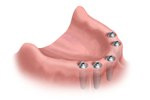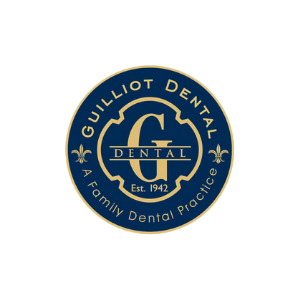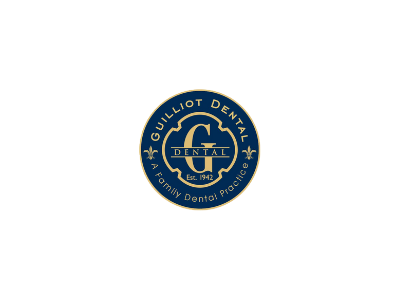
Dental Implants
Dental implants are a great way to replace missing teeth and also provide a fixed solution to having removable partial or complete dentures. Implants provide excellent support and stability for these dental appliances.
Dental implants are artificial roots and teeth (usually titanium) that are surgically placed into the upper or lower jaw bone by a dentist or Periodontist – a specialist of the gums and supporting bone. The teeth attached to implants are very natural looking and often enhance or restore a patient’s smile!
Dental implants are strong and durable and will last many years. On occasion, they will have to be re-tightened or replaced due to normal wear.
Reasons for a dental implants:
- Replace one or more missing teeth without affecting adjacent teeth
- Resolve joint pain or bite problems caused by teeth shifting into missing tooth space
- Restore a patient’s confident smile
- Restore chewing, speech, and digestion
- Restore or enhance facial tissues
- Support a bridge or denture, making it more secure and comfortable
What does getting dental implants involve?
The process of getting implants requires a number of visits over several months.
X-rays and impressions (molds) are taken of the jaw and teeth to determine bone, gum tissue, and spacing available for an implant. While the area is numb, the implant will be surgically placed into the bone and allowed to heal and integrate itself for up to six months. Depending on the type of implant, a second surgery may be required in order to place the “post” that will hold the artificial tooth in place. With other implants the post and anchor are already attached and placed at the same time.
After several weeks of healing the artificial teeth are made and fitted to the post portion of the anchor. Because several fittings may be required, this step may take one to two months to complete. After a healing period, the artificial teeth are securely attached to the implant, providing excellent stability and comfort to the patient.
You will receive care instructions when your treatment is completed. Good oral hygiene and eating habits, alongside regular dental visits, will aid in the life of your new implant.
If you have questions about dental implants or would like to schedule a consultation, please contact our office.
Single Tooth Replacement
When both the tooth and root are damaged, the best permanent replacement is a dental implant in conjunction with a ceramic crown. This solution both looks and functions just like a natural tooth.
In this case, a so-called one-piece implant is used. This means that all components are installed as a single unit, resulting in immediately full functioning teeth, shorter treatment time and minimized pain.
- Immediately functioning teeth
- Excellent esthetic result
- Life long, stable solution
Treatment
This procedure normally includes four visits to the Periodontist. You should expect to be able to work the day after having the implant placed.

1. Before the procedure
The Periodontist makes a first examination and takes one or more x-rays of the area to prepare for the procedure.

2. Installing the implant
The implant is placed. At this time, a temporary tooth is provided that allows you to eat and function like normal almost immediately. The implant will need a few months to integrate with the jawbone before the next step is taken.

3. Attaching the new crown
The final step is the placement of the permanent ceramic tooth. The new tooth is installed for life. No additional treatment is needed.

4. End result
You should expect the new tooth to fit and function just like a natural tooth. Perform your usual dental hygiene to keep the tooth and gum around it clean.
Alternatives to an all-ceramic crown on implant:
Tooth-supported fixed bridge
A traditional bridge involves grinding down adjacent teeth to support the bridge. It is a stable solution with good esthetics and function that is fairly easy to install. However, this alternative has two main disadvantages: continuous bone resorption in the edentulous area (the area without a tooth), and removing the protective enamel of the healthy teeth in order to have a bridge placed. This bridge will have to be replaced several times throughout your lifetime.
Removable partial denture
This is not a permanent alternative to a lost tooth. It is unstable and loosely attached, which affects both function and comfort. A removable partial denture is made of plastic – a material that can’t create the same esthetic result as a ceramic crown. The benefits are few but do exist. It is easily and quickly installed and relatively cheap. However, the forces of the denture can affect the teeth adjacent to space and cause them to loosen.
Resin-bonded bridge
This alternative has some clear advantages: it is quickly installed, functions well and, since it is made of ceramic, it gives a high esthetic result. Moreover, natural healthy teeth aren’t affected. But it is not very permanent. The resin-bonded bridge will eventually come off – probably after just a couple of years – and will then have to be reinstalled.
Multiple Tooth Replacement
In this case in the picture to the right, when replacing three teeth in the far back of the mouth, a fixed bridge anchored to two dental implants or three individual implants are the only fixed alternatives. Traditional dentures can’t offer the same stability or function.
Having dental implants replacing your missing back teeth will give you new, unparalleled strength and stability that allows you to eat what you want. It will also preserve your jawbone and facial appearance.
- The only fixed alternative in this situation
- A stable, secure solution that lets you eat what you want
- Preserves your facial appearance and prevents bone loss
Treatment
After the initial examination, you can expect 4-5 additional visits until the final fixed bridge is permanently attached. Any discomfort is usually treated with an ordinary anti-inflammatory agent, such as Motrin. You should expect to be able to work the next day.
The course of treatment described here is one of several options available. Consult your Periodontist to find out what the best solution is for you, given your specific condition.

1. Before the procedure
Three teeth at the back end of the mouth are missing. The only real replacement alternative is installing a fixed bridge. The bridge contains all teeth in one piece and is anchored on dental implants.

2. Installing the implant
First, the implants are installed. This is normally done in a single session. A temporary bridge may be placed at the same time, making it possible for you to function like normal almost immediately after leaving the office.

3. Attaching the bridge
The implants need to integrate with the jawbone before the permanent bridge is attached. This is normally done 1-2 months after the implant installation. The time will vary, depending on the teeth affected and the esthetic demands.

4. End result
The new bridge will handle all the pressure that your strong, natural back teeth did. You will have a stable and secure solution that allows you to eat what you want. You may also wish to have three implants placed to replace the three lost teeth. The implants are then restored as individual teeth.
Alternatives to fixed bridge:
Removable partial denture
This alternative is often perceived as uncomfortable and a bit complicated to use. Function can’t be compared to that of a bridge. This denture is made of plastic and metal, which affects its look. It is quite expensive to fabricate due to its many parts. However, the installation process is simple, and natural teeth are spared. Unfortunately, many partial dentures are never worn after being made as there is an adjustment phase that some patients cannot tolerate.
Full Mouth Replacement
When all teeth are missing or in such condition that they need to be replaced, a fixed bridge anchored to dental implants is the best permanent solution.
Before dental implants, there were no fixed solutions available for people who lost all their teeth. Today, it is possible to replace a full jaw with dental implants and a fixed bridge that results in a permanent, stable and highly esthetic solution.
- Allows you to eat and function as if you have natural teeth
- A solid, stable solution that will serve you for life
- Preserves your facial appearance and prevents further bone loss
Treatment
The treatment procedure and number of visits is largely dependent on the specific conditions. But all in all, 8-10 visits should be enough to have a fixed bridge installed. Most patients report that they were much more comfortable following the procedure than they had anticipated.
The course of treatment described here is one of several options available. Consult with your Periodontist to find out what the best solution is for you, given your specific condition.

1. Before the procedure
The Periodontist determines what needs to be done and prepares the patient for the coming treatment procedure.

2. Installing the implants
The first step in installing dental implants is to replace the lost tooth roots. In this case, five implants are used. Temporary teeth are attached that enable you to eat and function like normal while waiting for the permanent bridge to be installed.

3. Attaching the bridge
The final bridge is securely installed on top of the implants. With a full jaw replacement like this, it normally takes several visits to have the bridge completely attached.

4. End result
Your new teeth should be hard to tell from natural – both for you and others. People who have had traditional dentures before getting a fixed bridge often describe this as an overwhelming and very positive experience.
Alternatives to fixed bridge:
An alternative to a fixed bridge is a removable overdenture, which is anchored on implants. The old fashioned denture still has advantages but will fit much better if there are four or more implants supporting this prosthesis.
Removable, implant anchored overdenture
A removable full denture that is connected to either a ball or bar attachment, which in turn is anchored on two or more implants in the front or back part of the jaw.
The implants help keep the denture in place and provide better function and comfort. Cost is usually the reason why this solution is chosen over a fixed bridge – although the end result can’t be compared.
Removable full denture
A denture that is loosely placed on top of the gum to cover the missing teeth. This alternative has no real advantages – except for its low price and easy installation.
The disadvantages are many: discomfort in eating, poor esthetics, affected speech, and sore gums from denture movement. Moreover, a full denture placed in the upper jaw severely reduces the sense of taste.
Insurance Providers accepted:
- In-network with Cigna, Always Care, Sunlife Financial, and MetLife.
- Medicaid is only accepted for adult dentures at the Downtown Lafayette location.


